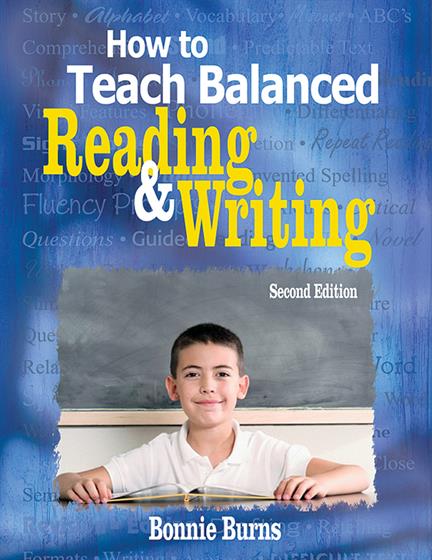Preface
Publisher's Acknowledgments
About the Author
1. Balanced Reading and Writing
The Reading Wars
Combined Approaches
Whole-Part-Whole Model of Instruction
Continuing to Define Balanced Instruction
Integrating the Language Arts
Levels of Support and Intensity of Instruction
Balancing Student- and Teacher-Centered Instruction
2. Getting Ready to Read
Concept of Reading
Language Acquisition
Sociocultural and Other Factors That Affect Reading
Emergent Literacy
Letter and Word Recognition
Comprehension and Beginning Readers
Choosing Texts for Beginning Readers
Emergent Writing
Success in First Grade Is Critical
3. Developing Phonemic Awareness
Developing Phonemic Awareness
The Alphabetic Principle
Phonological Awareness and Alphabet Knowledge
Phonemic Awareness Skills
When Should Phonemic Awareness Be Taught?
Balancing Phonemic Awareness
Initial Activities for Learning Phonological Awareness
Phonemic Awareness Activities
At-Risk Readers
Resources for Phonemic Awareness
4. Teaching Word Recognition
The Debate About Phonics
How Does Word Recognition Develop?
Word Recognition in a Balanced Reading Program
Approaches to Teaching Phonics
Activities to Teach Word Recognition
Phonics and Older Students Who Struggle With Reading
Assessing Sound-Symbol Relationships
5. Fluency
Fluency Is Linked to Comprehension
Assessing Fluency
Factors Affecting Fluency
Individual Methods for Improving Fluency
Whole-Class Methods for Improving Fluency
Reading Rates
Other Fluency Issues
Thinking About Rate for Older Students
6. Guided Reading
What Is Guided Reading?
Leveled Groups
Planning and Logistical Management
Procedures
Teaching Comprehension During Guided Reading
Questioning
Variations
7. Grouping for Reading and Choosing Books
Reading Groups
Whole-Group Instruction
Small-Group Instruction
Independent Reading
Responding to Literature
Children Need to Read Extensively
Choosing Books
The Advantage of Great Literature
8. Instruction for Comprehension
Capable and Less-Capable Readers
An Instructional Model for Teaching Comprehension
Factors Affecting Comprehension
Comprehension Strategies
Comprehension Activities for Before Reading
Comprehension Skills and Strategies During Reading
Comprehension Strategies for After Reading
Strategies for Higher Level Thinking: Inferring, Generalizing, Evaluating
Putting It All Together
Influencing the Attitude and Motivation of Readers
9. Vocabulary Instruction
Vocabulary Development
Depth of Word Knowledge
Is It Worthwhile to Teach Vocabulary?
Indirect Teaching of Vocabulary
Choosing Words for Direct Teaching
Prereading Activities for Teaching Vocabulary Directly
Extension Activities for Directly Teaching Vocabulary
Teaching Students Strategies for Learning New Words
Reviewing Vocabulary With a Magic Square
Assessing Vocabulary
10. Teaching and Learning Spelling
Stages of Spelling Development
Characteristics of Good and Poor Spellers
Spelling Should Be Taught Developmentally
Activities to Encourage or Teach Spelling
Techniques for Transitional Spellers
Spelling Rules
What About Spelling Tests?
11. Balanced Writing
Elements of the Writing Process
Developmental Stages of Writing
Balanced Writing Instruction
Writers’ Workshop
Structured Writing
Audiences and Genres
Writing in Response to Reading
Looking Back at Objectives and Balanced Writing
12. Reading and Writing in the Content Areas
The Differences Between a Textbook and a Novel
Trade Books and Text Sets
Removing Obstacles to Comprehension With Prereading Activities
Removing the Obstacles of Concept Vocabulary
Guiding Comprehension During the Reading Process
Responding to Texts After Reading
Standard Techniques That Do Not Work Well
13. Assessment
Determining Reading Level With an Informal Reading Inventory
Diagnostic Assessment
Informal Classroom Assessment
Standardized Assessment
Assessing Assessment
References
Index



